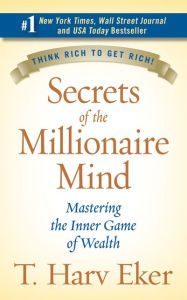Mastering Your Inner Game

“It’s not about the tennis. It’s not about the win or the loss; if we’re here to experience, then we are free.”- W. Timothy Gallwey Everyone who had to play a tournament or had to perform at a high skill level knows and values the importance of the right mindset.
I’d like to share a great article with you by Dan Kennedy. In my opinion, all success starts with mastering what goes on in your head. As a hypnotherapist, most of.
All great physical and intellectual performance has to be supported by mental aspects or factors. We have all seen examples of people with great physical strength or intelligence who do not end up meeting their immense potential because they underestimated the power of “this inner mental game.” One of the classics on the importance of the inner mental game in all areas of performance and using tennis as an example is the book “The Inner Game of Tennis” by W. Timothy Gallwey. Here are 8 keys on how to master your inner game from the classic book: 1. The Two Parts Of Every Game: An Outer Game And An Inner Game “The player of the inner game comes to value the art of relaxed concentration above all other skills; he discovers a true basis for self-confidence; and he learns that the secret to winning any game lies in not trying too hard.”-W. Timothy Gallwey Gallwey says that there are two major games that we have to play in life. The first game is the one that he calls the outer game and it is played against a physical opponent and where we grapple with external obstacles and reach external goals.
The other game is the inner game that we have to play against our inner self-doubt, nervousness, lack or lapses in concentration. This inner game is played by us to overcome the limitations and habits of the mind that decrease self-excellence and diminish performance. Once you master this inner game, Gallwey says, you can naturally and effectively learn anything.
It is much like walking and talking that we do intuitively and the process does not have to be learned fresh. However, it involves breaking habits that interfere with it and just let it or allow it to happen. “You must learn to let go. Release the stress. You were never in control anyway.” ― Steve Maraboli, Life, the Truth, and Being Free 2.
“Show” And Not Just “Tell” To Teach And “Do” And Not Just “Listen” To Master Something “The most common complaint of sportsmen ringing down the corridors of the ages is, It’s not that I don’t know what to do, it’s that I don’t do what I know!” “Other common complaints that come constantly to the attention of the tennis pro: I play better in practice than during the match. I know exactly what I’m doing wrong on my forehand, I just can’t seem to break the habit.”- W. Timothy Gallwey Knowing information but being unable to act on it is very relevant problem that we all have at some area of our lives or another. Not surprisingly, I had the same problem and ironically it was in the very game of tennis. When I was nineteen, I was playing 4-5 hours of tennis and wanted to improve on certain forehand strokes.
But it seemed that I had hit upon a wall. My coach was telling me what to do and I knew intellectually what to do—to swing back a bit further, allow the ball to rise up and then make impact with a racquet face at a certain angle and then follow through. If I followed Gallwey’s advise, I would have watched my coach perform the stroke several times and imagined the scenario in my mind and then allowed my body to perform the stroke. Gallwey says that once he stopped overreaching, said less words, relaxed more, he began noticing more and his students would auto-correct themselves.
Rem Dummy File For Ntvdm on this page. He tried that with his next student, Paul and instead of the usual explanations, he hit ten forehands himself and instructed Paul to watch closely and instead of thinking just grasp a visual image in his mind. Paul was instructed to repeat the visual image in his mind many times and then allow his body to imitate. Ironically, the one part of the stroke- the moving of the feet that Paul was thinking about was the one that he did not remember to move. The rest of the stroke was fluid and perfect for the first attempt. What I learned from Paul’s story is that the brain takes better instruction through pictures and imagined moves and less so through over thinking and verbal instruction. It is fascinating to me that we learn better by letting the unconscious mind absorb images of good play and not by speaking to it or instructing it.